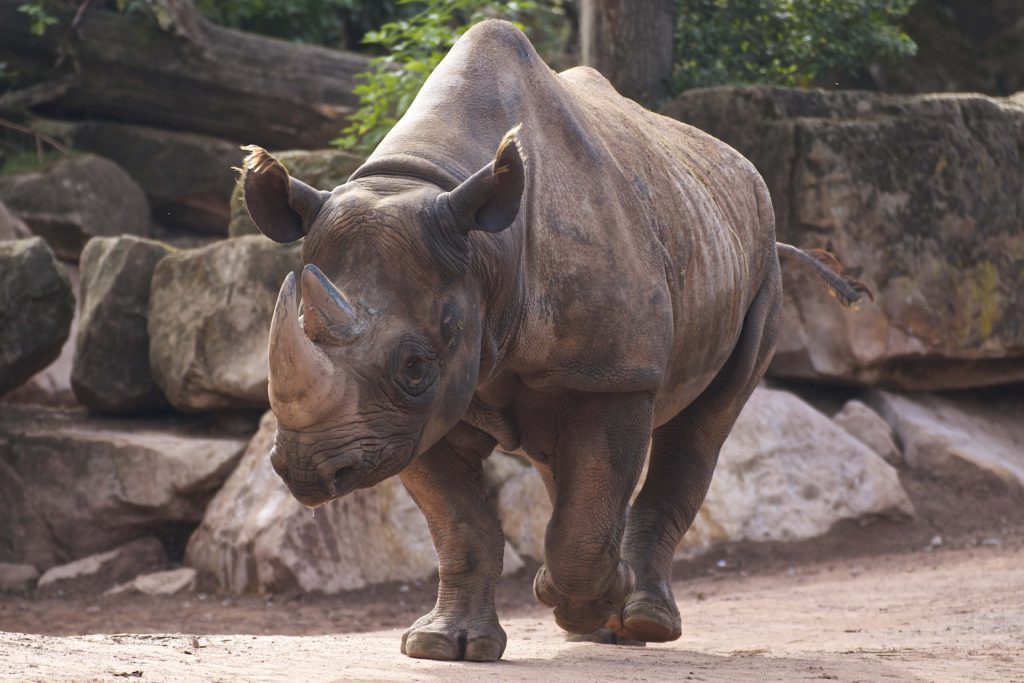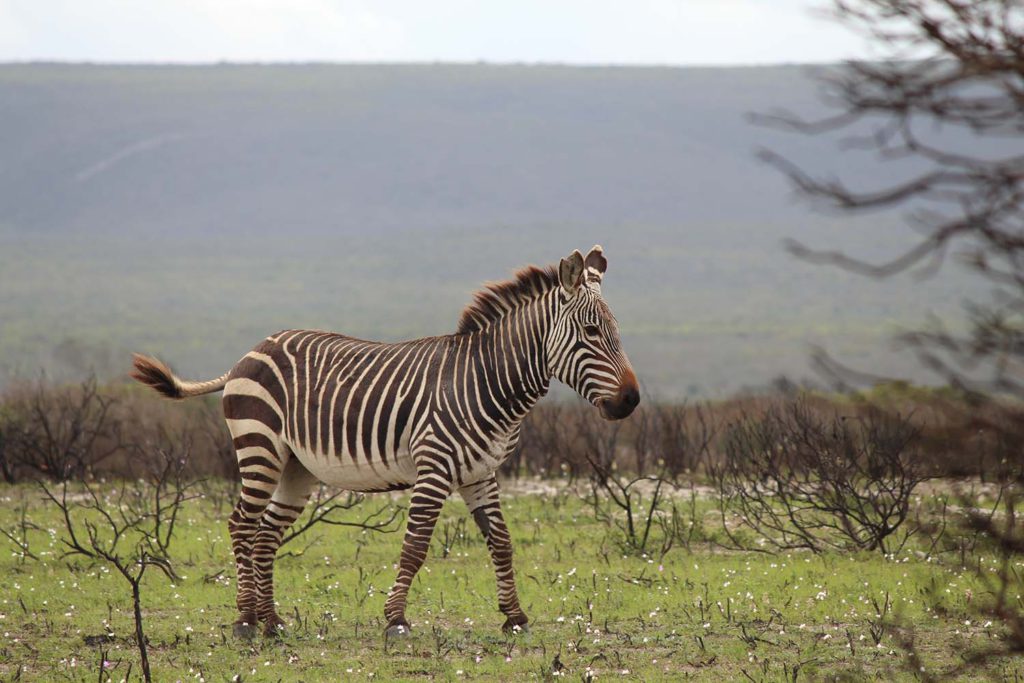The mega threat to mega-herbivores
Departments Research impact and institutes 12th April 2018
The University of Manchester has teamed up with Chester Zoo to fight the potential extinction of some of the planet’s most iconic – and threatened – species.
A collaboration between the Zoo and the University will see a £1.1 million investment made in research aimed at protecting the future of creatures like the Eastern Black Rhino and Grévy’s zebra, both native to Africa.
Nature’s giants

Black rhinos are one of five species of rhinoceros and are critically endangered. According to Save The Rhino, while the black rhino was once the most numerous of all the living species, widespread poaching means that today there are fewer than 6,000 left alive.
This is still a significant recovery from the early 1990s, when numbers fell as low as 2,400 – but it’s a long way from the hundreds of thousands of black rhinos that once roamed Africa. Of the four subspecies of black rhino, one – the Western Black Rhino – has already been declared extinct.
While poaching is the single greatest cause of the black rhino’s decline in numbers – with their horns sought both as status symbols and for use in Chinese medicine – another issue is range collapse. In fact, close to two-thirds of mega-herbivores – animals like rhinos, hippos and elephants – are at risk of extinction because of range collapse, the degradation of their habitat and persecution.
Researchers from the University will work to identify the underlying causes of the poor population growth of certain species of mega-herbivore, including the Eastern Black Rhino, Grevy’s zebra and the Cape Mountain zebra. And this isn’t the first time our researchers have got their hands dirty in order to preserve the future of Africa’s population of zebras.
Doing the dirty

Last year, we shared the news that Dr Susanne Shultz of the School of Earth and Environmental Science and her team have been examining zebra dung in an effort to gain insight into the emotional wellbeing of the animals – and what better place to start? In fact, this method is jokingly referred to as ‘poo science’ – and it can provide scientists with valuable knowledge.
Dung contains glucocorticoid hormones, which are used to regulate the ‘fight, flight or freeze’ response. They’re therefore a good indicator of stress levels. The researchers examined the stress levels of a population of Cape Mountain zebras in order to determine how well they were responding to conservation programmes designed to protect them.
Commenting on the University’s new collaboration with Chester Zoo, Professor Shultz said: “This partnership represents the best of collaborative applied science. The University is combining its expertise, facilities and technology with the conservation experience and global conservation reach of the Zoo to find innovative solutions to the global biodiversity crisis.”
Cape Mountain zebras belong to the smallest species of zebra, and getting these conservation efforts right is vital to save them from extinction.
Of course, it’s too late to save the Northern White rhinoceros from this fate. While the White rhino species is under less threat than the other four species, its subspecies the Northern White Rhino recently lost its last known living male.
Sudan was captured in 1975 and sent to the Dvůr Králové Zoo in the Czech Republic. During his time in captivity, the wild Northern White rhino population fell in number from around 700 to just 13. In spite of breeding efforts, no new Northern White rhino calves have been born since 2000, and Sudan’s death has left just two surviving members of the species – his daughter Najin and granddaughter Fatu.
Safeguarding the future

Dr Sue Walker, Head of Applied Science at Chester Zoo, said: “The recent loss of Sudan, the Northern White Rhino, has highlighted the challenges of species conservation. One way to support this challenge and prevent extinction is to use science to unravel how species, both within and outside their natural range, are interacting with their environment.”
While it’s too late for Sudan, there’s still work that can be done to safeguard other mega-herbivore populations. University researchers note that remaining rhino and zebra populations in Africa have become massively fragmented, and both hunting and livestock competition continue to place them at risk.
Studies including the ‘poo science’ already conducted on Cape Mountain zebras will be carried out to examine and monitor the health of the remaining wild populations to track the impact of both human disturbance and environmental changes. These results will help species conservation managers to improve and perfect their planning strategies and use resources more effectively.
But saving these species will take more than the next few years, or even decades. A further part of the partnership will therefore see new conservationists receiving training that will allow this important work to continue into the future.
Words – Hayley Cox
Images – cuatrok77
The University of Manchester
biodiversityChester ZooconservationEartearth scienceenvironmental science




